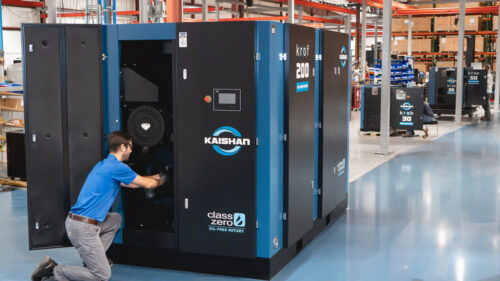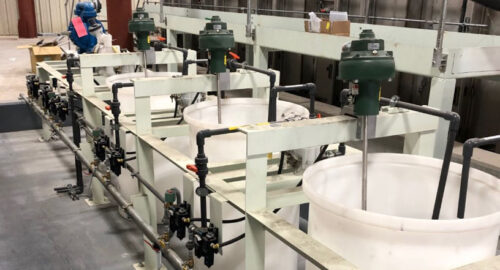A predictive maintenance road map to energy savings
The successful integration of standard PdM technologies can capture significant energy savings and simplify ROI calculations. By the way, any associated benefits of increased safety, reliability and enhanced facility capacity are purely coincidental.
The connection between maintenance and energy savings is not well understood. In fact, some view energy savings as just an electrical issue rather than a holistic approach to all kinds of plant floor energy. In the first of a three-part series, Dale P. Smith takes a look at how energy measurement as part of a predictive maintenance system can save time, money and energy throughout your facility.
Part 2: A look at opportunities in compressed air and steam traps.
Part 3: How two different plant managers approached the problems
All facilities lose energy dollars through overheated electrical distribution systems, overloaded and misaligned rotating assets as well as lose expensive compressed air and steam through leaking pipes/fittings. Couple this with the increasing pressures of global competition, thinning workforce, and budget constraints are forcing us to improve equipment reliability by fully leveraging predictive maintenance (PdM) technologies.
This paper focuses on how the successful integration of standard PdM technologies can capture significant energy savings and simplify ROI calculations. By the way, any associated benefits of increased safety, reliability and enhanced facility capacity are purely coincidental.
Matching Knowledge and Information
Bailouts, wars, elections, and the gloomy global economy have forced hard decisions for many. For example:
1. Rising fuel costs force air lines to get creative and pass the costs to flyers such as charging for food, leg room, checked luggage, and even pulling wires to reduce weight.
2. Even one man’s trash is another’s treasure. For years, no one wanted sawdust and now it is up to $50/ton to or $1,200 per truck. One may say “we are being forced to get everything out of the pig except the squeal”.
These types of external pressures are squeezing all corporate profits, sustainability goals and affecting maintenance organizations which are:
- Already thinly staffed with backlogs exceeding available hours
- Very reactionary
- Relegated to keeping the existing systems as good as possible
How will you get creative to save money and add back to the bottom line or protect whatever reliability team is still standing? This is difficult since many facility maintenance departments are care takers of older equipment and systems which were not designed for energy conservation.
Step 1 – Build an Inventory of Your Assets
It is crucial to gain a complete picture of all assets within a reliability program or at least the equipment targeted in your pilot project. If you are very, very lucky, your computer maintenance management systems (CMMS) may have some or all of this information.
Keep in mind that from an electrical standpoint, many organizations don’t breakdown the electrical systems to the component level (i.e. relays, breakers, and lighting panels) and will not show up in the CMMS.
Don’t underestimate the challenges of integrating multiple data sources and types. For example, you may have to work through a mix of spreadsheets, PDFs, databases, MS Word documents, and proprietary software and the inconsistencies associated with each.
If you are finding information gaps or at the early stages, roll-up your sleeves, grab a simple facility layout drawing and notebook and walk the facility to capture asset name plate data.
Step 2 – Get the Energy Bill
This step requires work with the Energy Manager to review two to three years of bills and energy patterns. If you don’t have an energy manger, your utility suppliers can help explain the billing and any calculations. Use the sample electric bill and formula to calculate the cost per kilowatt hour (kWh) which will be applied to many of the energy saving calculations in this document.
(For the purposes of this document, most of the energy savings are calculated using electricity as the base, other than steam generation which includes natural gas, water treatment, etc. Additionally, the approach is in general terms. Numerous additional factors can impact or fine-tune each calculation.)
The calculation requires dividing the total monthly bill or aggregate cost of power (A) by the on- peak (B) and off-peak (C) kWh
Step 3 – Follow the Money to Prioritize Your Efforts
The challenge for most organizations is determining which systems will provide the biggest payback based upon the specific technologies. A simple prioritization approach is to divide the gas, electric and oil bills into two usage categories; by building type or use and by equipment types which are common to a variety of process and applications, compressed air, pump and fan systems, etc.
Don’t get trapped by assuming the highest energy consumers are enough to drive your PdM process. For example, your facility may have hundreds of fractional horsepower motors that cumulatively consume a lot of energy, but the labor, analysis and reporting costs of deploying PdM to each is more than the replacement costs.
Taking the time to consider each asset’s criticality and value to the organization can eliminate 20% or more of originally targeted assets. An asset criticality ranking process creates weighted scores based upon probability of failures, failure severities, value impact on associated personnel, systems, buildings and the overall organization.
Ultimately, you end up with a comprehensive site equipment list and corresponding criticality score that can be easily sorted to identify the most critical equipment by asset classification, building, and cost center.
The list will be used to identify which equipment to focus on first with specific maintenance strategies. Equipment having a high ranking will likely have more advanced PdM equipment strategies and analysis performed; whereas equipment having the lowest ranking may have a lower maintenance strategy such as “run-to-failure”.
At this point, we will assume that you have completed the energy and criticality prioritization and that the failure modes in the four following facility systems can be monitored with the associated PdM technologies.
Each organization has a different profile. For example, industrials have a higher number of process-related motor loads, pharmaceuticals more HVAC loads and commercial buildings more focus on the electrical, HVAC and roofing systems.
Remember, you have limited number of attempts to gain or keep support so make sure you are focusing those items with the best probability of showing savings. The intent of the following examples are to provide basic calculations to establish the concept and “ball park figures” for electrical and steam energy savings which will peak enough interest to get you a seat at the “funding table”.
Step 4 – Formulas to Calculate the Savings
Electrical Savings – The key process requires capturing power consumption measurements taken when an anomaly is identified and after placing a piece of three-phase equipment is put back into service. The two-step process is as follows:
1. Power Calculations
kW – kilowatt
Volts – voltage used in the application
Amps – difference in amperage (before – after)
PF – power factor
1000 – takes the total watts and by dividing makes it kilowatts
c1.732 – square root of 3 for 3 phase power. Eliminate this number for single phase systems.
4.2 = average number of cfm/break horsepower (bhp). This is based on manufacturers’ equipment data
2. Annual Savings
Once the kW is determined a second formula is required to determine the annual savings:
Annual Savings = hrs x kW x cost / kW
Energy Saving Assumptions for Calculations:
• Hours of Operation = 8760
• Cost / kWh = $.08
• Equipment is fully loaded
• Motor Efficiency Factor = .90
• Power Factor = .87
• 100 Horsepower Motor
• Average power requirement in kW / brake horsepower
(bhp) to generate one bhp = 0.746
• Compressed Air Pressure = 100 PSIG
Steam Savings
Steam calculation requirements go beyond the intent of this paper due to collecting numerous items such as boiler efficiency, loading, losses, number of boilers, fuel cost per 1,000 BTU, steam pressures, water treatment chemical costs, labor burden, etc. Depending upon the size of your facility, the boiler plant team will have the cost per 1,000 pounds of steam. The facility energy manager or the boiler manufacturer can help. This paper assumes a cost of $12 per 1,000 pounds of steam.
Electrical distribution Systems
Electricity and electrical distribution systems are the backbone of how we live and what drives most of our nation’s progress. The issue at hand is that much of the electrical generation and distribution systems are over 60 years old. Many have surpassed their designed life and more susceptible to failure with safety and supply variables.
These power issues, such as the following, are often hidden and problematic to equipment:
Unstable utility supply / line surges
Lightning strikes / transient voltage
Unbalanced and overloaded transformer bank
Short circuits
Unidentified single-phase ground faults
Faulty power factor correction equipment
Expertise and staffing shortages
These variables are often hidden but can manifest themselves as single phasing, shorted windings, overheated transformer banks and partially tripped over current protection.
Zurich Insurance Risk Engineering reports identify that 30% of all large fire losses are caused by electrical failures (includes all cases and unknown). Figure 3 breaks down these failures to the component level and shows the percentage of electrical losses caused by lack of maintenance.
IT thermography
IR thermography captures thermal anomalies and variances in temperatures. It is ideal for capturing high resistance, overloaded, phase imbalance and loose electrical connections that cause overheating and waste energy.
Use infrared thermography and the asset inventory, created in Steps 1-3 as a road map to scan your high priority transformers, switch gear, disconnects, distribution panels and contactors, relays, breakers, etc. Scan while equipment is under at least 40% load and hit critical transformers / connections during typical high temperature periods (June, July and August).
Electrical Infrared Survey
Assume that during your infrared survey, a 480 volt, three-phase breaker is found to be operating at a temperature of 171F (Figure 4). The measured ambient temperature is 73F. The breaker is rated at 100 amps but the actual load is measured at 38 amps. The anomaly is determined to be a loose connection and requires cleaning and tightening to be returned to a precise state.
Do you have experience and expertise with the topics mentioned in this content? You should consider contributing to our CFE Media editorial team and getting the recognition you and your company deserve. Click here to start this process.





